In the hometown of Sun Quan, a small town in the south of the Yangtze River, you can taste delicious food and visit the ancient town to enjoy flowers, waiting for you to have a different and comfortable vacation
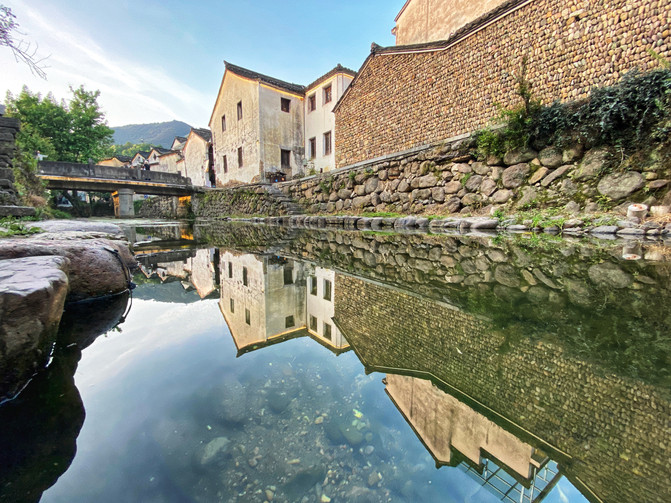
[Foreword]
Many people ask where to go during the short holiday? Where to go on the weekend? It's best to find a quiet place, and it's best to stay for the night to rest and relax. I recommend a two-day tour around Hangzhou to everyone.
Schedule:
D1: Hangzhou-Longmen Ancient Town-Evergreen Town, living in Evergreen Mountain Residence
D2: Zhujiawu Village, Huaishan Township-Hu Clan Ancestral Hall-Hu Zhen Memorial Hall
D3: Shangguan Township Racquet Industrial Park-Wang Zaixi Memorial Hall-Dashansi Reservoir-Return Journey

[Overview] She is a Jiangnan town hidden on the south bank of the Fuchun River. The gurgling Longmen River supports simple villages and people; she has well-preserved ancient buildings in the Ming and Qing Dynasties. The label of the hometown of Sun Quan in the Three Kingdoms adds a bit of legend and chivalry.

Legend has it that Yan Ziling, a famous figure in the Eastern Han Dynasty, traveled to Fuyang and discovered this beautiful place. He gave it a resounding name-Longmen. Longmen Ancient Town has a population of more than 7000. Longmen is not only a geographical concept, but also a cultural concept with profound implications.
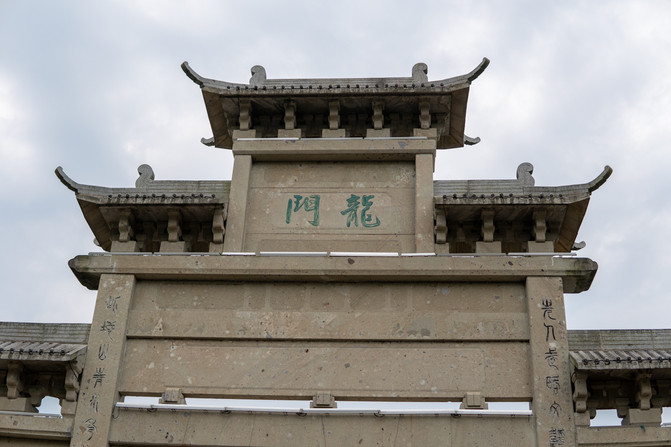

More than 90% of them are descendants of the Wu Sunquan family of the Three Kingdoms. According to genealogical records, it is the 65th generation. It is a settlement of a famous family and a well-known "paradise".



Over the years, the Sun family has had many heroes since ancient times. Sun Quan sat in Jiangdong and achieved a generation of hegemony; back in the Spring and Autumn Period, Sun Wu, the military saint, wrote "The Art of War"; Sun Yat-sen, the great revolutionary pioneer in modern times, all had an unbroken blood and affection with the Sun family in Longmen. The profound humanities condense into Fuyang's strong historical and cultural atmosphere.

Longmen Ancient Town is located at the foot of Longmen Mountain in Fuchun River. It is the largest ancient village group south of the Yangtze River, about 16 kilometers away from Fuyang in the urban area. The old streets and alleys of the ancient town are paved with fist-sized pebbles, so remember not to wear high heels.

The ancient town is famous for its unique Ming and Qing ancient buildings. It is a relatively complete mountain town among the Ming and Qing ancient buildings in the Jiangnan area today. Behind the village is Longmen Mountain, with an altitude of 1067 meters. It has overlapping peaks and myriad weather. It is the crown of Fuyang Mountains.

The types of ancient buildings in Longmen Ancient Town include brick archways, towers, temples, temples and dozens of halls from the Ming Dynasty. These buildings with different functions have survived vicissitudes and wars and are well preserved. Together with ancient camphor trees, small bridges, streams and streets, it constitutes the unique landscape of the ancient town. Jiangnan Town is a carefully rendered ink painting.




Residential houses with pebbles as walls, wide halls that reveal the true nature of logs, ancient camphor bridges that are full of simplicity, and beautiful streams that gurgling through the village... We seem to have seen Yongkang's mother river in a foreign land.


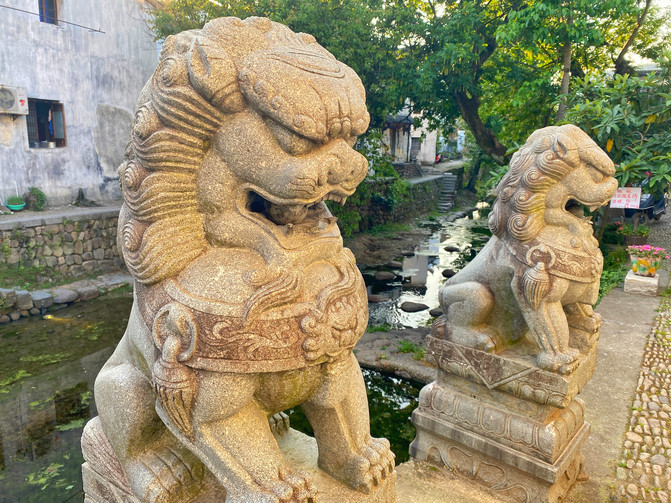
[Changlu Town, an old revolutionary area]

Evergreen Town is located in the southeastern part of Fuyang District, with Xiaoshan in the east and Zhuji in the south. It belongs to the junction of "two cities and three places" and is a typical mountainous town. Evergreen Town is a provincial-level old revolutionary area in Zhejiang, a national-level ecological town, and the hometown of basketball in Zhejiang Province. Therefore,"red, green and basket" are evergreen golden business cards for tourism culture. Evergreen was called "Changchun" in ancient times. Because the territory was full of green bamboos and evergreen all year round, it was renamed "Evergreen" after liberation. There are eight administrative villages in Changfeng, and most of the residents have the surname "Zhang". The Changfeng Zhang family is also a prosperous family in Fuchun.


[Dazhang Village]
Dazhang Village, where the town government is located, is a famous historical and cultural village in Zhejiang Province. Su Dongpo in the Song Dynasty and Ji Xiaolan in the Qing Dynasty have family friends; Chunxiao on the Sudi, one of the real scenes of the West Lake, and Longjing Wencha, one of the ten scenic spots of the New West Lake, also have connections with the Zhang family. Let's go in and have a look


The west side of Dazhang Village is backed by Chenghuang Mountain. In front of it, there are two villages surrounded by north and south rivers, facing water and back mountains. It can be said that "the mountains are surrounded by water, hiding the wind and gathering the atmosphere", and the feng shui is excellent.
Evergreen Old Street is one of the most well-preserved old streets in Fuyang. It was originally a bluestone slab and cobblestone street, but is now buried underground. The main street is more than 800 meters long and runs through the town from south to north. It is divided into front street, horizontal street and back street. Now it is located in the back street. Dazhang Village became the largest market town on the south bank of Fuchun River as early as the Chenghua period of the Ming Dynasty. It is full of streets and highways and is crowded with tourists. It is a commercial distribution, cultural and educational center with a radius of dozens of miles.

Many zodiac animals are painted on both sides of the walls of many old houses. Why? It turned out that the lime on the outer layer of these old houses peeled off piece by piece, as ugly as rotten scars. During the renovation of small towns, a master folk craft master from the first house in Jiangnan of Pujiang created a lifelike animal shape based on the peeling shape of the wall. This method cleverly protects historical buildings and beautifies walls at the lowest cost. Everyone takes a photo with their zodiac animals. If you can't find them, take a photo with this four animals.

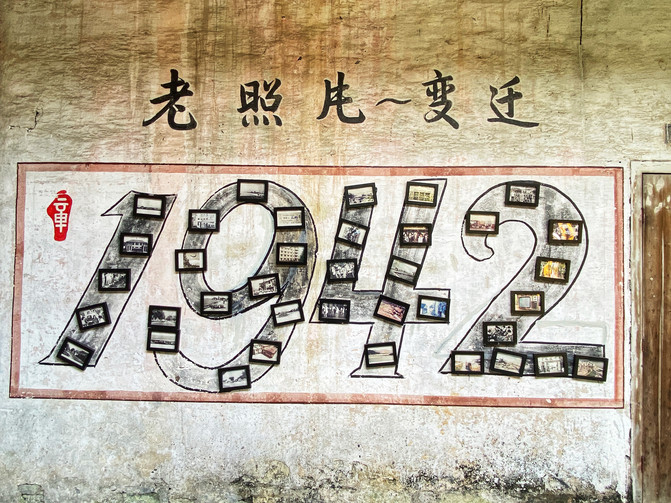

It is precisely because Dazhang Village has these original measures to protect historical buildings that it has been included in the protected villages of key cultural villages in Zhejiang Province. There are as many as 32 well-preserved ancient platforms in the Ming and Qing Dynasties. In addition, there are paper paste Gao Zhao, evergreen paper umbrellas, evergreen board dragons, and evergreen rice cakes, all of which are provincial and municipal intangible cultural heritage.

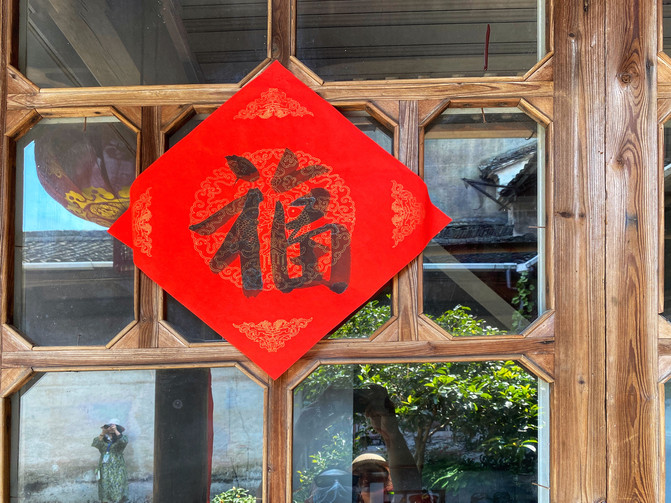
After Juhetaimen was burned down by the Japanese invaders in October 1940, the owner rebuilt his home. The newly built building materials were destroyed again by Japanese invaders 'aircraft in June 1942 and rebuilt the following year. It is precisely because of this turbulent history that the word "Juhe" is even more meaningful: families must live in harmony when they gather together, and countries must live together peacefully when they gather together.


A canteen was opened here during the Great Leap Forward period, and there is still a table on the wall of the large-scale production and construction competitions. The fastest progress on the left is the cosmic speed, which successively decreases to satellite speed, aircraft speed, and finally becomes turtle speed., snail speed, very interesting and full of wisdom.
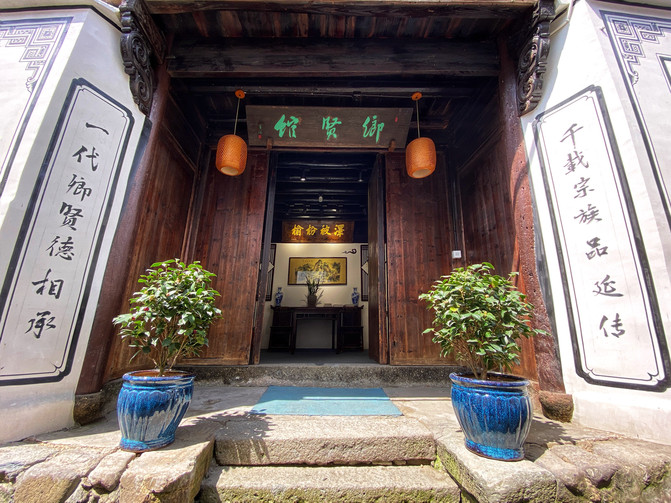
Laotaimen also gave birth to a national Greco-Roman wrestling champion. He was Zhang Shoulu, the former deputy director of the Coaching Committee of the China Wrestling Association. What we see here is the old-fashioned daily life of the villagers of Dazhang Village in Laotaimen. Five or six families live in harmony; there are also people living in harmony with Swallow under the same roof. The so-called Juhe Taimen can be called a true name.


The former site of Zhang's ancestral temple was built in the early Ming Dynasty, with the largest area among Zhu, Xiao and Fu. It is the only ancestral temple of the top scholar in Fuyang. There were eight flagpoles in front of the temple.
Now there are dragon slabs and paper paste Gao Yao stored in the building, both of which are provincial intangible cultural heritage. In the first month of every year, the Zhang family people dance dragons and erect Gao Yao to welcome the New Year and pray for a bumper harvest of the grain and peace for the country and the people. This evergreen folk activity has a history of nearly 500 years.

The Zhang's Grand Ancestral Temple walked forward and came to Tongchun Xing (Room). It was built in the Tianqi Period of the Ming Dynasty and completed in the Wuchen Year of Chongzhen. At that time, the ancestor Ying Minggong was the deacon for the temple building. He once asked the temple to be built and built on the same day as the ancestral temple. It has been rumored to be a beautiful story. In August 1942, the front hall was blown up by Japanese invaders aircraft, and the former residence was renovated to its present appearance due to disrepair due to its age. The bricks used in Tongchunxing and Zhang's Grand Ancestral Temple are huge, similar to the bricks used in the city wall. They are rarely seen in the Jiangnan area, which shows the past glory of Tongchunxing and Zhang's Grand Ancestral Temple.

Walking forward after the same spring journey, you will find the Yuanbao Stone Ruins. The Yuan gem is named because it looks like a Yuanbao. On the side is the Yongnian Taimen, which was built in the second year of the Republic of China by the late sage Zhang Guichu. Zhang Guichu's son Zhang Yongnian, a carefully crafted folk treasure, a paper umbrella, has been listed as a provincial intangible cultural heritage.

What is the most famous specialty of Evergreen in everyone's impression? By the way, evergreen tofu, there is also evergreen roasted poultry and stewed meat; there are also evergreen Wu pork, evergreen dog meat, evergreen stewed three delicacies, and evergreen bamboo shoots. The most distinctive feature of evergreen is water bamboo shoots, but the yield is not large and it is almost impossible to buy on the market.
[Evergreen Stone Staircase]


The evergreen stone ladder is one of the most famous natural scenery of evergreen. This stone ladder has a beautiful mountain shape, and then there are strange rocks and strange forests. We can also see large and small waterfalls, stone ponds and so on.



It is a place to do slow aerobic exercise. Walking this stone ladder can not only exercise, but also watch the scenery on the road. When working on weekdays, you either stand for a long time or sit for a long time. It is also a very good choice to come to the evergreen stone ladder for activities.
[Evergreen Mountain Residence]

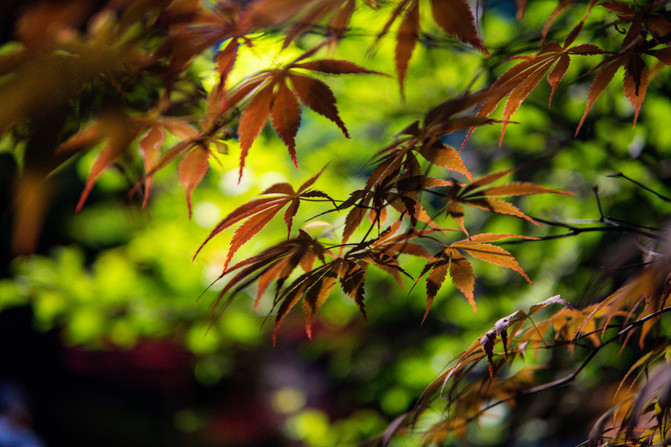
Evergreen Mountain Residence is a very famous B & B in the local area. It took three years for this dream building with white walls, black tiles and horse head walls to finally restore itself in front of the world. The reason why evergreen is "evergreen" is because there are bamboo forests all over the mountains and fields. The environment is quiet and the scenery is pleasant. It is a good place for a quiet life. At four o'clock of the year, the scenery here is different, such as the Yingshan red in full bloom in spring, the alternating yellow and red maples in autumn, and the silver in winter. Of course, the strongest color is still green.

The European-style building next to it was once Lao Zhang's residence. He used it as a reception hall and restaurant. Together with this Hui-style house, it was named "Evergreen Mountain Residence".

Pushing open the thick old wooden door, you will see a patio that hides the wind and water. A wall cover in front of the door retains the wind. Water flows along the eaves, flows through the hidden ditch, and collects in the middle pool. This small place contains the wisdom of ancient life.


Stay here for one night at Evergreen Mountain Residence. The B & B here not only has a good room environment, but also the delicious food here. In the evergreen mountainous area, its meals are all relatively original ingredients. For example, local specialties such as tofu, dried bamboo shoots, and evergreen three delicacies are all very good and are very suitable for friends who like to keep healthy.

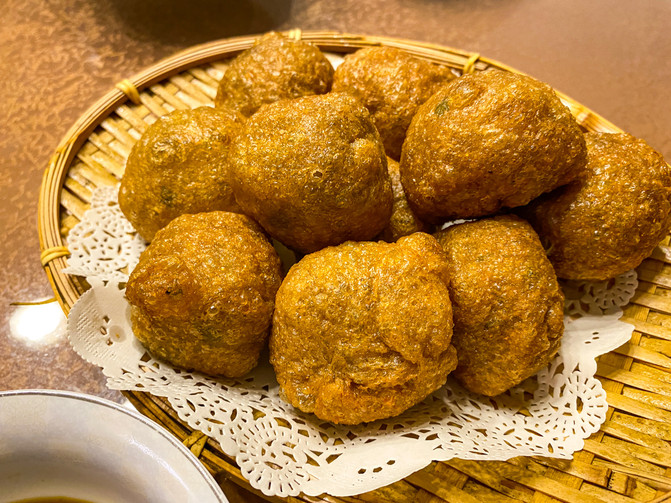

I feel that this is the place where ancient buildings and modern decoration blend together. In spring, there are green bamboo seas here. In summer, there will be a trace of coolness. The autumn sunshine is warm and quiet. In winter, of course, this is a simple and quiet winter scenery in Jiangnan.
[Xiangbang Culture Huashan Township]
Huanshan Township is located in the southwest of Fuyang District, Hangzhou City, 15 kilometers away from the seat of the district government. It is right off the Hangqian Expressway to Zhongbu Section. Huanshan is named after the village surrounded by mountains and the area is surrounded by mountains.

Zhujiawu Village, Huanshan Township, has a history of more than 500 years. Similar to Huku in Yongkang, Hu Gong's hometown, most villagers in Zhujiawu Village have the surname Hu. Coincidentally, the "Hu's Family Instructions" hanging on the wall of the ancestral hall also coincide with Yongkang's "Hu's Family Instructions", warning future generations to "read, be diligent, be obedient, be cautious, be loyal and filial."
[Hu Clan Ancestral Hall]

The Hu family's honest and simple family tradition has given birth to many talents, and the rural culture has made Zhujiawu's heritage more profound. There are private schools owned by Dong Bangda, the imperial master of the Qing Dynasty, the "Liusheng Garden" given by Emperor Jiaqing to his filial son Hu Qian, and cultural and ink relics belonging to famous people such as Hu Zhen, a famous seal cutter in the late Qing Dynasty.
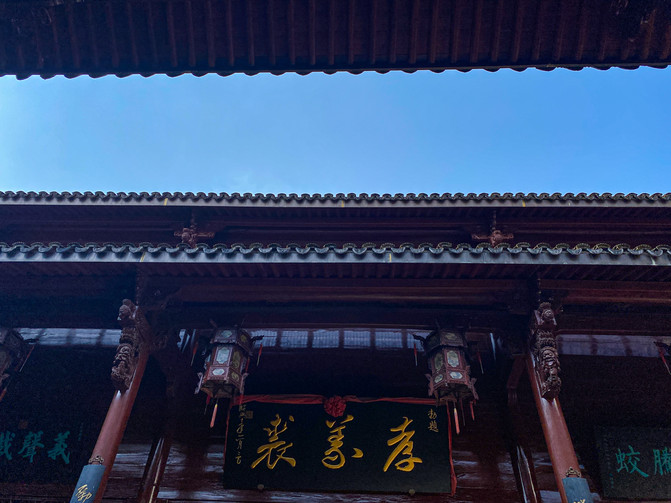
The Hu Ancestral Hall, also known as the "Baoxuntang", was built during the Jiaqing period of the Qing Dynasty. It was destroyed in the war in the second year of Tongzhi and was rebuilt during the Guangxu period.
There is a gold plaque with the words "Wei Tang Fu Gui" hanging high in the middle of the main hall. This was written personally for Hu Ning, the chief historian of Xiangguo, when he retired during the Wanli period of the Ming Dynasty. It corresponds to the two ancient osmanthus trees in the courtyard. It looks very simple and elegant.

The plaque "Qin Bao Pure Filial Piety" hanging high on the right was given by Emperor Qianlong to express his gratitude for Hu Qian's filial piety. The plaque on the left,"National Hua and Family Celebration", is the surviving calligraphy treasure of Dong Gao, son of Dong Bangda and also a scholar.
There is a stage in the middle of the main hall. There are two doors in and out of the stage, with the words "Exit General" and "Enter Phase" written respectively. This is not only needed for the scenes in the play, but also the life goal pursued by the Hu people for hundreds of years, inspiring generations of descendants to strive for self-improvement.

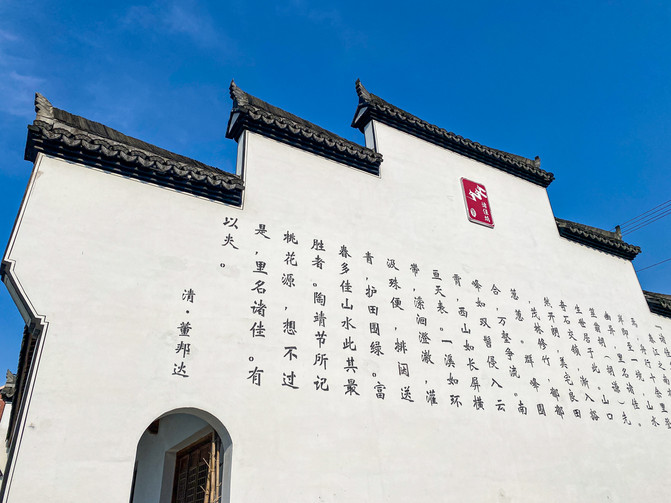
Behind the stage, on the shadow wall opposite the main entrance of the ancestral temple, there is a woodcut plaque of "Hu's Family Instructions" hanging. The words are simple and shocking, but the philosophical meaning is profound.
The filial piety that Hu Qian practiced in those days has not been outdated yet. Because of the concept of filial piety, the Hu family's family and neighborhood relations are particularly harmonious; Hu Zhen was born in a family of books and is a unique person. He has high attainments in calligraphy and seal cutting. He is one of the founders of the Zhejiang School of seal cutting with far-reaching influence.
[Hu Zhen Memorial Hall]

Hu Zhen was a famous seal carver in the late Qing Dynasty. The construction of the Hu Zhen Memorial Hall was led by the People's Government of Fuyang City. Construction started in the autumn of 2012, with a main construction area of more than 700 square meters. The museum site is located in the Qing Dynasty private garden "Liusheng Garden" in Zhujiawu Village, Huanshan Township, Hu Zhen's hometown. The original site was the shrine of Hu Qian, the filial son of his fifth ancestor during the Qing Qianlong Dynasty. The entire memorial hall comprehensively and vividly records Master Hu Zhen's glorious life in pursuing art with a large number of detailed and precious historical materials and modern multimedia expressions.



The interior of the memorial hall is divided into one main hall and six exhibition halls. The collection in the museum is exquisite and rich, including not only Mr. Hu Zhen's works and related materials, but also the life stories of his filial son Hu Qian and the display of filial piety culture. It not only displays the models of the eight families in Xiling, but also presents the style of Fuchun Printing Society. The museum also collects prints and works collections of hundreds of contemporary Xiling Seal Society members
[Shangguan Township, the hometown of Chinese rackets]


Shangguan Township, Fuyang District, has two mountains and one stream. It has a typical hilly landform in the south of the Yangtze River and also has a unique beautiful scenery of the mountainous countryside with lush forests and bamboo trees. Because the township has more than 23,000 acres of bamboo forest, it is a well-known "Hometown of Bamboo" and "Top Ten Characteristic Bamboo Hometowns in Hangzhou City."

Relying on the mountain to eat the mountain. Under the spring breeze of the party's reform and opening up, the hard-working and intelligent Shangguan people have developed their wisdom and dared to venture and try. In the tide of the market economy, tens of thousands of acres of bamboo cultivation have created greater value. Since the 1980s, hundreds of badminton racket manufacturers have emerged in this small mountain township, and the racket-specific industry has emerged.


Shangguan people have made use of bamboo resources all over the mountains and plains to turn rackets into a large industry. After more than 30 years of development, they have become the main racquet production base at home and abroad, and have been awarded titles such as "Hometown of Chinese Racket" and "China Racket Export Base".



Since the successful production of the first bamboo badminton racket in the 1970s, the township has gradually developed to produce a variety of racket products, forming a complete industrial chain from pole making, water mark, spraying, printing, packaging to foreign trade sales. At present, there are more than 300 racket companies, with an annual output of more than 100 million rackets, which are exported to more than 70 countries and regions.



There was also a famous figure named Wang Zaixi in Shangguan Township, a figure of the hour who once attracted widespread attention from both sides of the Taiwan Strait and even domestic and foreign media. Here is his former residence called: Guoquan Former Residence,
Previous Article:A three-day leisurely tour of Linan Heqiao Ancient Town, watching the sunset set along the Liuxi River
Next Article:[Jiande] For the first time in the New Year, I took my children to realize my dream of flying into the sky
